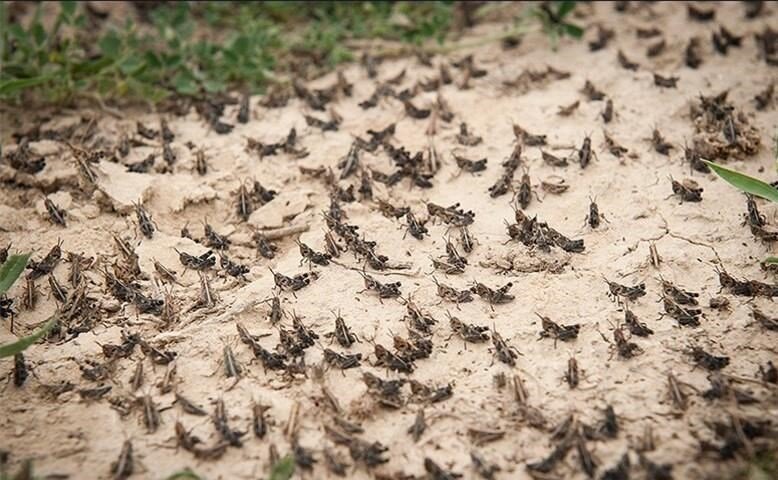Fighting off locusts underway in southern Iran

TEHRAN – Some 2,000 hectares of land in southern parts of the country are undergoing locust control operations, IRIB news agency reported on Tuesday.
Farmlands in the provinces of Hormozgan and Sistan-Baluchestan have undergone aerial spraying of chemical insecticides and ground pest control operations.
Pest control operations have been carried out on 800 hectares of rangelands in Hormozgan province with Parsian city being the most affected by desert locusts, the provincial agriculture organization Mehdi Torabi stated.
He said that in the city of Parsian, so far, 48,000 hectares of rangelands have been tracked to identify areas contaminated with locusts.
In Bastak and Jask counties, 9 hectares have been sprayed against desert locusts, along with 21 hectares of Kish Island, he added.
The new wave of locusts attacking the province has begun since late February, Torabi said, adding, some 15 task forces are tackling and tracking desert locusts in different provinces.
He further stated that the damage caused by the desert locust outbreak is under investigation.
Meanwhile, Heidar Zoraghi, head of agriculture organization of Sistan-Baluchestan province, said that 1,103 hectares of land in the cities of Sarbaz, Nikshahr, Konarak, Chabahar, and Fenuj have been sprayed against the pest.
He called on all farmers in the province's agricultural sector to report the matter to the nearest agriculture organization in case of sighting a locust outbreak.
Last year, desert locusts penetrated into the provinces of Bushehr, Fars, Hormozgan, Kerman, Khuzestan, and Sistan–Baluchestan, which resulted in major losses on over 500,000 hectares of farmlands and gardens.
FAO explains that desert locust infestations are normally present in southeast Iran during the spring. Local breeding coincides with seasonal rains that often occur from about February or March until April or May. In warmer years, rains that occur during the winter can lead to late winter and early spring breeding.
By June, vegetation is usual dry again and any adults that were produced during the spring move east towards the Indo-Pakistan summer breeding areas. Most of the spring breeding occurs along a 450 km stretch of coastal plains on the Arabian Sea from Jask (Hormozgan) and the Strait of Hormuz and Gulf of Oman in the west to Chabahar and Gwadar (Sistan-Baluchestan) near the Pakistan border in the east.
The most important area along the coast is the Vashnum Plains near Chabahar. If rains fall and temperatures are warm, breeding may also occur in the interior, namely the Jaz Murian Basin from Kahnuj to Iranshahr, and in the Zaboli, Suran and Saravan valleys that lead to Panjgur, Pakistan. Desert Locust adults rarely cross the mountains to the north of these areas.
FB/MG
Leave a Comment